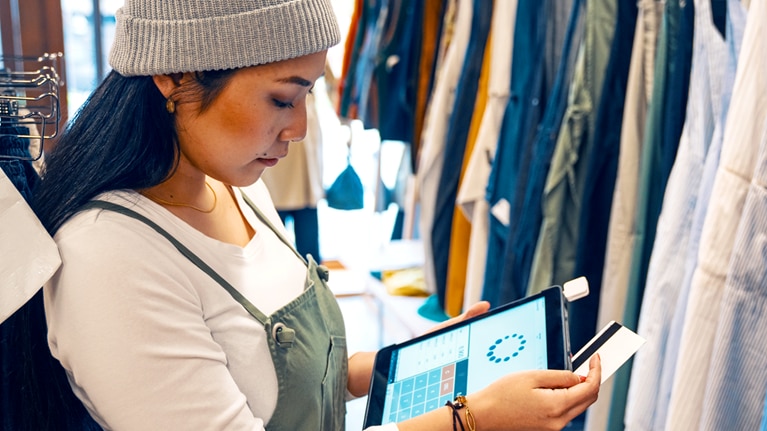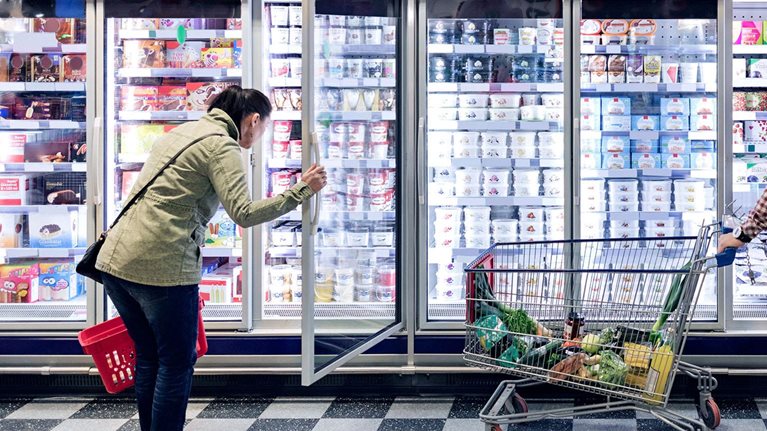You might not call yourself one, but you are probably a “zero consumer.” A diverse and growing segment, zero consumers share the following attributes: they’re omnichannel shoppers, they scrimp and splurge at the same time, they’re not loyal to brands, and they care about health and sustainability (even though they aren’t always willing to pay for it). They’re certainly everywhere in Asia, but they are a global phenomenon as well—and companies that don’t pay close attention to them could soon become irrelevant.
Anticipating and responding to what zero consumers want is just one of the challenges that consumer companies confront today. Another, equally daunting challenge is staying ahead of large-scale trends in technology, talent, and competition—trends that are fundamentally changing the retail game and therefore dimming the prospects of any consumer company that fails to act faster than its peers.
How can a company win the zero consumer and gain competitive advantage? We recommend a focus on four imperatives: reimagine the omnichannel world, revamp your consumer proposition, ramp up personalization at scale, and reshape your societal footprint. In our experience, there are right and wrong ways to do all four.
Zeroing in on the zero consumer
What makes the zero consumer different from the consumer of years past? The following characteristics set zero consumers apart.
Zero boundaries. Consumers demand the full “phygital” experience—that is, they want retailers’ physical and digital offerings to be consistent and seamless. Media and technology players have set the bar with their superior omnichannel strategies, and now consumers expect the same convenient omnichannel experience from retailers. According to a recent McKinsey Consumer Pulse Survey, consumers are purchasing groceries and food in more channels than ever before. In South Korea, 71 percent of respondents say they are omnichannel grocery shoppers, while only 19 percent do their grocery shopping exclusively in stores. Omnichannel grocery shoppers are even more prevalent in India (78 percent) and China (74 percent). That’s a big departure from just five years ago, when the percentage of groceries purchased online was in the low single digits in almost every Asian country we surveyed, including India, Japan, South Korea, and Thailand. Consumers are also regularly switching between online and in-store channels to research products and to compare prices before purchasing.
Zero midrange. The zero consumer scrimps in some categories and splurges in others. This scrimp-and-splurge behavior puts pressure on midpriced brands as consumers flock to either cheaper or more premium brands. In China, for instance, 81 percent of respondents say they plan to purchase less or switch to cheaper brands in categories such as furniture and home improvement—but, at the same time, 69 percent say they plan to splurge on certain experiences and products, including restaurant dining, travel, apparel, and fitness.
Zero loyalty. When their preferred items were out of stock during the COVID-19 pandemic, many consumers tried new products and brands—and then kept doing so. In Australia, 63 percent of consumers surveyed in August 2023 said they had adopted new shopping behaviors—including shopping at different stores or buying different brands—in the prior three months (exhibit). This figure is even higher in India (87 percent), China (83 percent), and South Korea (67 percent). Whereas consumers were simply looking for availability during the pandemic, they’re now looking for value, quality, variety, and, increasingly, purpose. Value is especially important to consumers today: in India, 82 percent of consumers say they switch to a different retailer or brand when they’re looking for better value—in the form of lower prices, better promotions, or lower delivery fees. The same holds true for 61 percent of respondents in China and 76 percent of respondents in South Korea.

Net zero. Consumers are more concerned about value and values—in particular, they care about health, sustainability, provenance, and transparency. They’re increasingly turning to brands that offer sustainable yet affordable products. The trend is stronger in some Asian countries than in others: for instance, consumer concern about sustainability is still nascent in India, whereas many consumers in South Korea say they’d pay a premium for sustainably packaged grocery products.
Trends in technology, talent, and competition
Adapting to the zero consumer is one thing; doing so while keeping pace with large-scale trends in technology, talent, and the competitive landscape is yet another. Both are critical to consumer companies’ future success.
Consider how technology is fundamentally altering the consumer sector. Digitization and advanced analytics are enabling the most sophisticated companies to offer the hyperpersonalized, seamless omnichannel experiences that the zero consumer seeks. AI in all its forms—including machine learning and generative AI—can transform businesses when deployed at scale. Technology-centric business models, such as retail media networks (RMNs), present new opportunities for retailers. Amid all this technological change, retailers would do well to make fresh investments in new tech capabilities rather than simply paying down “technical debt” (the costs of fixing problems caused by subpar tech solutions).
On the talent front, attracting and retaining employees is tougher than ever. With competition intensifying for all kinds of talent—not only frontline staff, drivers, and warehouse workers but also tech talent and corporate executives—leading companies are making big investments in upskilling and reskilling programs. They’re doubling down on capability building, both organically (through in-house training) and inorganically (through “acqui-hiring”) to create a new generation of retail industry leaders. Some retailers in Asia are also tapping into the gig economy to boost the productivity of their labor force.
On top of all that is a changing competitive landscape. With a seemingly permanent postpandemic decline in store traffic, retailers need to reconsider their physical footprints. Tech ecosystems are on the rise, industry barriers are blurring, and companies are fighting to own customers and critical data. Retailers should consider both the threats and opportunities presented by adjacencies and breakthrough business models such as RMNs, eB2B, food service, and quick commerce.
The journey toward reinvention: Four imperatives
During this time of transition and change, what are the must-dos for consumer companies? The following four actions can kick-start the journey.
Reimagine the omnichannel world
Given the zero consumer’s omnichannel shopping behavior, leading retailers have invested in developing both their online and offline channels to offer a seamless experience. Examples abound: in India, the conglomerate Reliance, which operates more than 18,000 retail stores, has partnered with Meta to offer grocery shopping through WhatsApp. Companies like Sephora and Alibaba are experimenting with augmented reality and virtual reality to enable virtual try-ons. Nike’s apps give users special access to in-store offerings and in-person events.
The most forward-thinking retailers are finding ways to become more embedded in consumers’ daily lives. If you’re a retailer looking to deepen your customer relationships, traditional metrics such as “share of wallet” are no longer sufficient. Instead, consider pursuing and measuring “share of life.” This means you’ll need to expand beyond just selling products; you’ll need to become part of (or perhaps create) an ecosystem that provides products, services, and experiences to consumers. Maximizing share of life means giving customers more reasons to spend more of their time and money with your company, which will then allow you to better monetize your customer data.
Shopping platforms, such as Meituan and Shopee, exemplify such ecosystems. China-based Meituan aggregates offerings from various companies so that a Meituan app user can not only shop for products but also get food delivered, book a spa session, hail a taxi, play games, and engage in an array of other activities. To varying degrees, Amazon, Walmart, Tesco, and Nike are all building ecosystems as well, seeking to win greater share of life. Apparel retailer Lululemon, through its strategic partnership with fitness-tech company Peloton, is starting to build an ecosystem for its primary target customers: affluent women who want to stay in shape.
Retailers no longer have the luxury of choosing to stick to business as usual. Companies that say, “We just want to be the best at selling products; we don’t want to get distracted by other pursuits,” may not survive. Their biggest competitors are getting into other, more profitable businesses, such as e-marketplaces and RMNs. To get close to profit parity, every retailer will need to go “beyond retail” and explore those businesses as well.
The opportunities are vast and varied, so it’s essential to make smart decisions about where in the value chain you’ll play and where you’ll partner. Those decisions should be dictated by your capabilities: Where are you distinctive? What does your target consumer want to see from you? On your app or website, should you offer consumers the ability to open a crypto wallet? Attend virtual events? Create and customize an avatar? Buy products from other companies?
You will most likely need new skills outside your core competencies, so one scenario might be: you own the data, but you buy the technology and partner for the inventory. For example, introducing a gaming experience on your app could be very appealing to your customers and could drive frequent engagement, but if you don’t have in-house game developers, you’re not the natural owner of the game. Partnering with a gaming company might be the best option.
One caveat as you reimagine your omnichannel world: don’t overspend on customer acquisition. Investors are now placing healthy scrutiny on customer acquisition costs and are no longer rewarding huge spikes in new-customer counts. Instead, they’re looking for profitable growth.
Revamp your offer
With the zero consumer abandoning the midpriced tier, companies should consider revamping their value and premium offerings, including their fresh assortment and private brands. To appeal to consumers who are concerned about inflation and are inclined to scrimp, retailers need a strong “essentials” range: frequently purchased products at very competitive prices, with consistently high quality. Outside the apparel and fashion sector, few retailers can afford to just have a premium offering.
Some retailers have expanded their private-brand assortment, giving downtrading consumers new and affordable options. Retailers in Asia can look to the examples of modern grocers in other parts of the world—such as Mercadona, Tesco, and Trader Joe’s—which all offer a robust array of private-label products. At the same time, retailers would do well to introduce exclusive products—for example, new plant-based offerings, a wider selection of healthy and sustainable products, or a dedicated section of the store that serves prepared foods—both to drive differentiation and to provide attractive choices for consumers’ occasional splurges.
Ramp up personalization at scale
The value of personalization is by now well documented. In a McKinsey survey, more than three out of four respondents said that receiving personalized communications made them much more likely to consider a brand and to repurchase a product. Given the zero consumer’s lack of brand loyalty, personalization can be an invaluable tool in nurturing a company’s consumer relationships.
AI can give companies superpowers when it comes to personalization. Using an AI-powered decisioning engine, a company can send customers tailored messages through their preferred channels at exactly the right moments. AI can also help measure the success of—and continually refine—a company’s personalization efforts.
Today, the most sophisticated companies seek to personalize not just the online experience but also the in-store experience. Sephora, for instance, uses in-store tools to help its store associates make personalized recommendations to customers. A tool called Color iQ, the latest version of which is powered by AI, helps employees match makeup products to a customer’s skin tone.
At the highest-performing companies, personalization is a cross-functional effort, with team members coming from the marketing, product, analytics, operations, and technology departments. These project teams are responsible for running hundreds of personalization tests every year and learning from each of them. Companies should ensure that their personalization teams work in an agile manner, solving problems collaboratively and quickly.
Reshape your societal footprint
Companies need to demonstrate that they care about the health and well-being of people and of the planet. If two brands are similarly priced, the zero consumer will buy the one that markets itself as sustainable or purpose oriented. According to a recent study of US consumer spending by McKinsey and NielsenIQ, products with environmental, social, and governence (ESG)–related labels (such as “eco-friendly,” “vegan,” or “plastic free”) had higher sales growth than products that made no ESG-related claims on their packaging.
In deciding which ESG initiatives to pursue, consumer companies should prioritize those ESG-related actions that best advance their overall ESG goals. Companies can’t be distinctive in everything, so they should identify their unique capabilities and vulnerabilities and focus on taking the specific actions that matter most to their business models. They should then let consumers know about those actions—and one way to do so is through labels on product packaging.
There are many other ways in which a consumer company can choose to reshape its environmental and societal footprint. US beauty retailer Ulta, for instance, has made health and wellness a core part of its assortment; it has also made big investments in diversity, equity, and inclusion—reflected not only in Ulta’s product offerings but also in its workforce. Nestlé is expanding Harvest Gourmet, its line of plant-based meat substitutes developed for the Asian market. Other consumer companies have begun adopting regenerative agriculture, offering health services (such as diagnostic testing), or building new sustainability-related businesses.
Shifts in consumer behavior always present challenges—and, of course, new opportunities—for retailers and consumer goods companies. The emergence of the zero consumer should be a catalyst for innovation, propelling the boldest and most agile companies toward their next horizon of growth. Will your company rise to the challenge?


